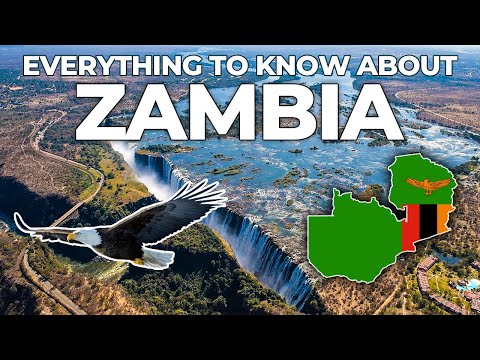
Zambia, a landlocked country in southern Africa, is known for its rugged terrain, vibrant culture, abundant wildlife, and lush landscapes. With its rich history tracing back thousands of years, Zambia has evolved through various eras from early stone age settlers to a modern independent nation. Here’s a quick journey through the key historical moments of this fascinating country.
**Pre-Colonial Era**
The earliest evidence of human habitation in Zambia dates back to the Lower Paleolithic era with the Kalambo Falls archaeological site showing continuous human occupation for approximately 250,000 years. During these ancient times, the area that is now Zambia was inhabited by Khoisan hunter-gatherers who were later joined and partially displaced by Bantu migrants during the Bantu expansion around 1,500 BC.
**Colonial Period**
European exploration began in earnest in the mid-19th century when David Livingstone, the Scottish missionary and explorer, traversed the Zambezi River and famously discovered Victoria Falls in 1855. He named them after Queen Victoria. His exploration opened up Zambia (then Northern Rhodesia) to European influence and soon after that British administration as part of Cecil Rhodes’ British South Africa Company (BSAC).
In 1924, Northern Rhodesia became a British Crown Colony. The colonial period was marked by significant economic changes notably in mining after vast reserves of copper were discovered which later earned Zambia the title ‘the Copperbelt’. However, this period was also characterized by racial segregation and economic disparity between races.
**The Road to Independence**
The mid-20th century saw rising African nationalism and demands for independence from European colonial rule across Africa. In Northern Rhodesia, key figures like Kenneth Kaunda began mobilizing support against colonial rule leading to significant political movements. These efforts culminated on October 24th, 1964 when Zambia gained independence from Britain with Kenneth Kaunda becoming its first President under a unified nationalist party—the United National Independence Party (UNIP).
**Post-Independence Era**
Initially adopting a policy of non-alignment in Cold War politics while focusing on internal development challenges such as healthcare and education infrastructure improvements under state-led initiatives; Zambia’s economy initially thrived largely due to high copper prices. However, with declining copper prices in the 1970s coupled with increased oil prices and nationwide droughts led to economic downturns.
In response to mounting pressures both domestically and internationally Kaunda introduced multi-party democracy in 1991 which saw him lose power to Frederick Chiluba of the Movement for Multi-Party Democracy (MMD). This marked a significant shift towards liberalization and privatization though it came with challenges such as corruption allegations against new political elites.
Today’s Zambia remains a unitary republic striving towards stable democratic governance and economic diversification away from heavy reliance on copper mining toward sectors like tourism centered on its natural attractions including numerous national parks and Victoria Falls.
**Cultural Heritage**
Zambia’s culture is richly diverse with over seventy ethnic groups living harmoniously. Much of Zambian culture is expressed through vivid music dance traditions unique culinary tastes distinct dress forms local crafts religious beliefs shared among these groups providing an eclectic yet cohesive cultural fabric that adds depth charm vivacity not just Zambian identity but also enriches global cultural diversity.
Zambia’s journey from ancient civilizations through colonial struggles towards sovereign statehood reflects resilience adaptability hope amidst adversity making this southern African nation not just historically significant but also relevant contemporary global narratives developmental paradigms seeking inclusive sustainable growth socio-economic equity opportunities all citizens irrespective background ethnicity creed gender orientation or any other marker difference society at large.
